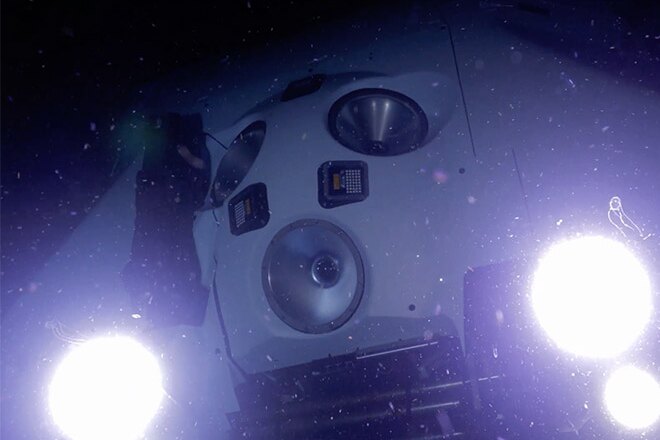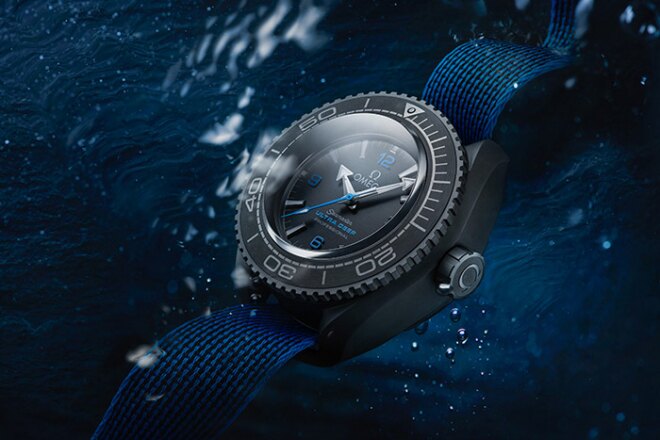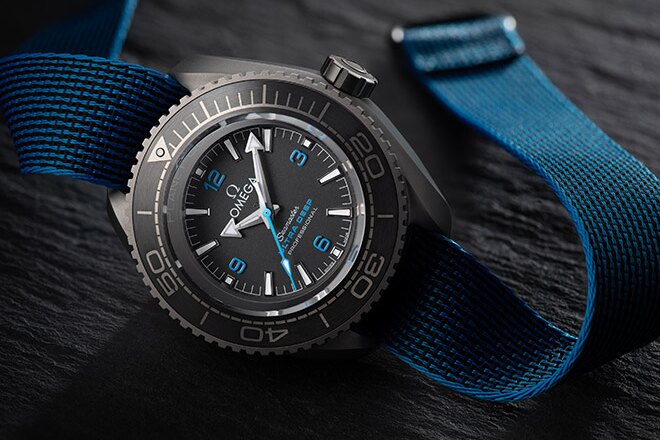When Victor Vescovo piloted his submarine „Limiting Factor“ to the bottom of the Mariana Trench at the beginning of this year, he set a new world record with a diving depth of 10,928 metres. Three Omega Seamaster Planet Ocean Ultra Deep Professional watches were along for the ride: Two attached to a submersible’s robotic arm, another to a Lander.

And who could be better suited to accompany a journey into the abyss than Omega, as the brand’s watches have joined divers and adventurers in dangerous depths for decades. In 1932 the „Marine“ was born – the first diver’s watch for everyone. This watch was used by the researcher Charles W. Beebe when he dared his 14-mile dive.
1948 the Omega Seamaster was introduced, valued by British pilots and sailors for its water-resistance and absolute reliability. The Seamaster 300 from 1957 was designed specifically for divers and underwater workers.
The Omega „Ploprof“ was created in 1970 and has accompanied Jacques-Yves Cousteau on his dives. Only one year later followed the Seamaster 1000, one year after that the Seamaster 120 Big Blue. In 1993 Omega launched the popular Seamaster Diver 300M.
The year 2005 then saw the beginnings of the Ultra Deep, which we present here today.

For Omega, the development of the Seamaster Planet Ocean Ultra Deep Professional started from scratch and included some risks. A watch doesn’t have to be enormous to withstand extreme pressures. The manufacturer managed to limit the thickness of the diver’s watch to less than 28 millimetres without sacrificing its exceptional resistance. The bezel, case, caseback and crown were machined cutoffs from the hull. The Seamaster Planet Ocean Ultra Deep Professional also comes with a viewport. The loadbearing surface of the Limiting Factor’s viewports has been engineered to minimise pressure on the inside edges of the cone, where the stresses are highest.
Fully integrated into the titanium case, the lugs of the Seamaster Planet Ocean Ultra Deep Professional are left open to lower the risk of exceeding material limitations at full ocean depth, as both the watch and the strap can be subjected to high traction loads. They are called „Manta“ lugs due to their distinctive look.
The maximum pressure selected was within the tolerances required in the Mariana Trench, but to be safe and meet the standards for diving watches, Omega insisted on adding a 25% safety margin, which meant that the watches had to work up to 1500 bar. And as if that wasn’t enough, the three watches were subjected to METAS rigorous testing for ten days after returning from their dive. Even after the strains in the depths of the Mariana Trench, the Seamaster Planet Ocean Ultra Deep passed all the tests and received the Master Chronometer certificate.

The expedition logo is located in the centre of the caseback, inside concentric circles evoking the Multi Beam sonar technology. Information such as model, reference number, certification and „tested to 15,000m 49212ft“ can also be found.
Omega’s choice of strap material drew on the brand’s experience in space: The combination of polyamide bracelet and Velcro closure is closely associated with the straps used in the Apollo missions.
